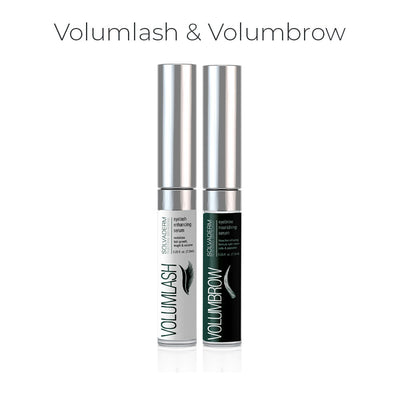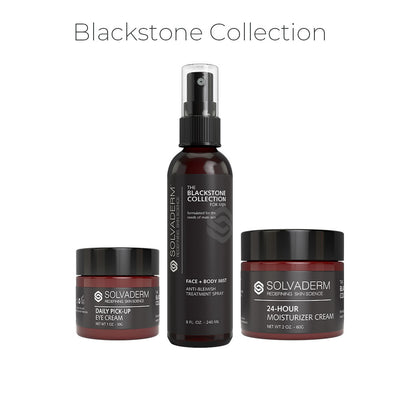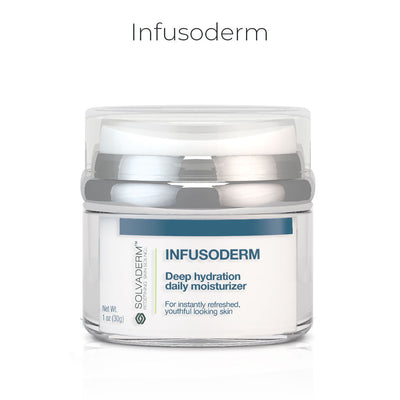Sunspots are flat, brown spots that appear on the skin due to sun exposure. Sunspots are not harmful or cancerous, but they can affect your appearance and self-esteem. Although they aren’t dangerous, you may want to prevent or remove them.
In this article, we will explain what causes sunspots and what you can do to treat or prevent them safely.
What Are Sunspots on The Skin?
Sunspots are areas of increased pigmentation that develop on the skin after exposure to ultraviolet (UV) radiation.[1] They are caused by the overproduction of melanin, the pigment that gives color to your skin, hair, and eyes. Melanin protects your skin from sun damage by absorbing UV rays, but too much of it can result in sunspots.
Sunspots on the skin vary in size, shape, and color, depending on your skin type and the amount of sun exposure. They usually range from light brown to black and can be round, oval, or irregular.
Sunspots- Common Locations on The Body
Sunspots can appear anywhere on your body, but they are more likely to develop on the areas that are exposed to the sun the most. Sunspots are commonly found on the face, hands, arms, shoulders, or chest.
If you want to hide sunspots on your skin, it can be difficult because they are found in the places that are most open and hard to cover. They also most commonly appear in the summer, when more of the body is open to the sunlight, and people spend additional time outdoors, so covering them up may be hot and uncomfortable.
Types of Sunspots
1. Lentigines (liver spots)
These spots are caused by aging and sun and are more common in people over 40 years old.
2. Solar lentigines (sun-induced spots)
Solar lentigines are caused by sun exposure and are more common in people with fair skin. They might reflect sun damage to your skin.
3. Ephelides (freckles)
Freckles are harmless and usually appear during childhood. They’re more common in people with pale skin and become stronger in the sun.
4. Sunburn
Sunburns are red, itchy, and painful, and severe sunburns can include blisters and peeling. They may increase your risk of developing skin cancer.
How long does a sunburn last? Usually a few days, up to a week.
5. Melasma
These brown or gray patches are caused by hormonal changes, such as pregnancy. They’re more common in women and people with darker skin tones.
Causes of Sunspots on Skin
1. UV radiation exposure
UV radiation can cause sunspots but also cancer, aging, wrinkles, and sunburn. Always remember to protect your skin from UV radiation.
2. Relationship between sun exposure and sunspots
More sun exposure does not necessarily mean more sunspots. Skin type, genetics, and the strength and duration of sun exposure can affect sunspots as well.[2]
3. Aging
As you age, your skin becomes more vulnerable to sun damage and less able to repair itself. Sunspots are more common in older people, but they’re not inevitable.
4. Genetics
If you have more melanin, you will be less susceptible to sun damage. Your genes also influence how your skin responds to the sun, such as how quickly you tan, burn, or develop sunspots on your skin.
Symptoms of Sunspots on Skin
Sunspots are usually asymptomatic, meaning that they do not cause any pain, itching, or discomfort. The only way you’ll notice sunspots on your skin is visually. They appear as dark areas with clearly defined borders, like darker, larger freckles.
Sunspots can become darker, larger, or more numerous with further sun exposure. This can make them more noticeable and harder to treat.
While they’re not cancerous, they indicate that your skin has been damaged by the sun and that you have a higher chance of developing skin cancer in the future. Sunspots on the skin are like a warning system that tells you need to protect your skin better.
Sunspots vs. Freckles
Sunspots and freckles are both types of hyperpigmentation that occur on the skin due to sun exposure. However, they have some differences in their causes, characteristics, and treatments.
Sunspots are caused by chronic or acute sun exposure and aging, while freckles are a result of a genetic predisposition along with sun exposure. Sunspots can appear at any age but are more common in older people, while freckles usually appear in childhood or adolescence. Both appear more commonly in the summer due to higher sun exposure and fade back during the winter.
Freckles have a more irregular border than sunspots on skin and are usually smaller. Both freckles and sunspots can vary in size, shape, and color, depending on your skin type and the amount of sun exposure. They are most common on the parts of your body that get the most sun exposure, such as your face, hands, arms, and chest.
Sunspots and freckles can also be prevented or reduced by avoiding sun exposure, using sunscreen, and treating with creams or laser treatments. However, sunspots are more likely to recur or worsen with further sun exposure than freckles and may require more maintenance and protection.
Key Strategies for Sunspot Prevention
1. Sunscreen
Sunscreen is one of the best ways to protect your skin from sunspots, sunburns, and even skin cancer. Make sure your sunscreen has an SPF of at least 30 and offers broad-spectrum protection.
Some sunscreens, like Dermaxsol Hydrating SPF Daily Moisturizer, are a sunscreen and moisturizing cream in one, so you can just apply one product and be ready for the day!
2. Protective clothing
To protect yourself from the sun, you can wear clothing with long sleeves and pants. You should also wear a wide-brimmed hat that covers your face, ears, and neck (the most common places for sunburns and skin cancer) and sunglasses that block UV rays.
3. Apply serum
Serums target specific skin concerns, such as sunspots or aging. Look for serums with ferulic acid, a potent anti-inflammatory and antioxidant.[3]
Ace-Ferulic Skin Damage Restoration & Photo Aging Defense Serum is a good example of how to get rid of sunspots.
4. Avoid tanning beds
Tanning beds can expose your skin to more UV radiation than the sun and may cause sunburn.
Some people wonder, “Does sunburn turn into tan?” However, tanning artificially is very dangerous and a common cause of skin cancer, as well as sunspots.[4]
5. Regular skin checks
It is recommended that you check your skin once a month. Look for any new, changing, or unusual marks. You can also visit your dermatologist once a year or more often if you have a history of sun damage, skin cancer, or other skin conditions.
6. Anti-aging skincare
Various systems of skincare can help prevent sunspots on the skin or help with sunspot removal. Systems with retinol or stem cells, like the Retinol & Age Defying System: Dermal Transformation Treatment, can be very effective. Look for products or bundles similar to that one for best results.
7. Lifestyle changes
Try to reduce smoking and alcohol, which both damage your skin. Stress can also aggravate skin conditions, so consider trying meditation or other stress-reducing behaviors.
FAQ’s
Can sunspots turn into cancer?
Sunspots indicate sun damage and increased skin cancer risk. They’re a warning sign of cancer, not a cause.
Are sunspots on the skin bad?
They aren’t harmful, but they can affect appearance, self-esteem, and health.
What age do you get sun spots?
Sunspots, unlike liver spots, can appear at any age, especially in people who are in the sun a lot.
Do sunspots appear suddenly?
No, but they can become darker or more noticeable with more sun exposure.
Are sun spots serious?
Not really, although they can indicate sun damage that can be serious.
Conclusion
Sunspots are brown spots on the skin caused by sun exposure. They are not harmful or cancerous, but they can affect your appearance and self-esteem.
They can also increase your risk of skin cancer, which is a serious and potentially life-threatening condition. Therefore, it is advisable to prevent or treat sunspots, as well as protect your skin from further sun damage.
You can do this by using sunscreen, protective clothing, serum, avoiding tanning beds, regular skin checks, anti-aging skincare, and lifestyle changes. By following these strategies and tips, you can keep your skin healthy, beautiful, and sunspot-free.
References
1] ↑Choi W, Yin L, Smuda C, Batzer J, Hearing VJ, Kolbe L. Molecular and histological characterization of age spots. Experimental Dermatology. 2017;26(3):242-248. doi:
2] ↑Diffey B. Time and Place as Modifiers of Personal UV Exposure. International Journal of Environmental Research and Public Health. 2018;15(6):1112. doi:
3] ↑Zhai Y, Wang T, Fu Y, Yu T, Ding Y, Nie H. Ferulic Acid: A Review of Pharmacology, Toxicology, and Therapeutic Effects on Pulmonary Diseases. International Journal of Molecular Sciences. 2023;24(9):8011. doi:
4] ↑An S, Kim K, Moon S, et al. Indoor Tanning and the Risk of Overall and Early-Onset Melanoma and Non-Melanoma Skin Cancer: Systematic Review and Meta-Analysis. Cancers. 2021;13(23):5940. doi:










